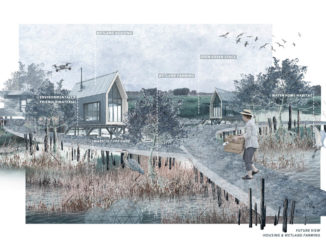Winner of Merit Award in the Student – Design category of the 2020 WLA Awards.
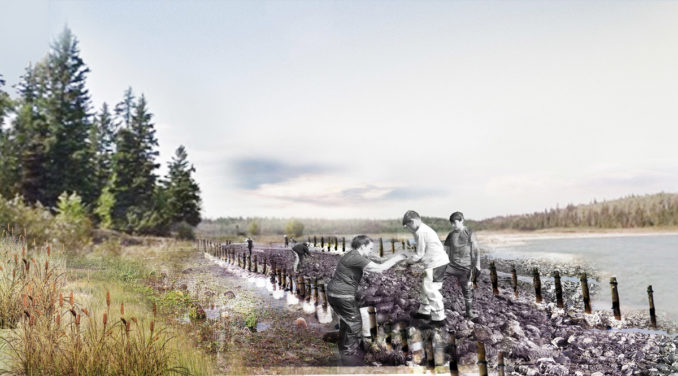
As a result of hydroelectric dam activities and industrial operation superimposed political boundaries, both quality and quantity of downstream water environment being despoiled. This proposal in the area of Peace Athabasca Delta is intended to restore the image of a vibrant ecosystem as well as provoke discussion and further thought around water rights. By creating a hybrid water intervention along the river, a landscape infrastructure is proposed to create public space, which articulates to highlight the inherent dialogue between water resource, ecosystem, and history for tourists. Meanwhile, the design demonstrates the sustained interaction with the local communities by recovering new social-ecological relations with the river also implies the claim of sovereignty concerning water and food.
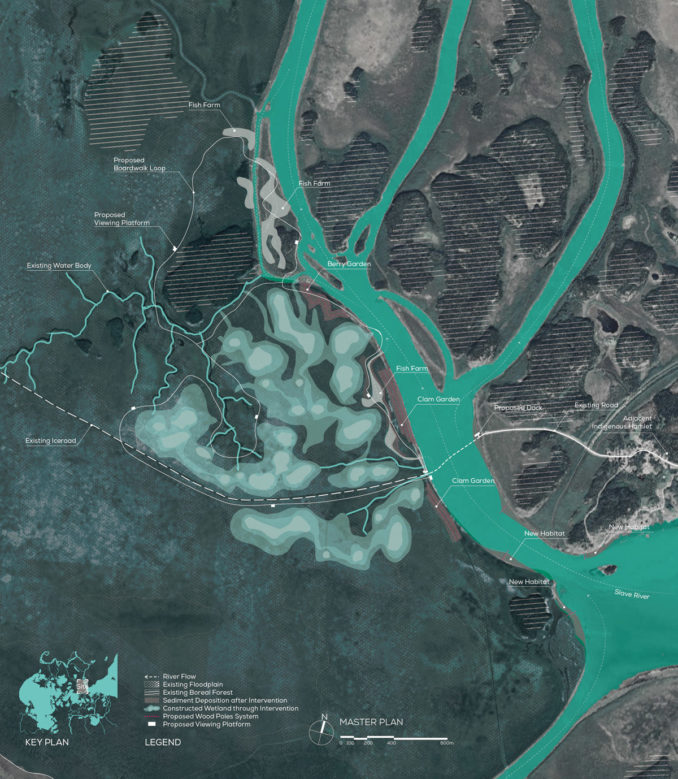
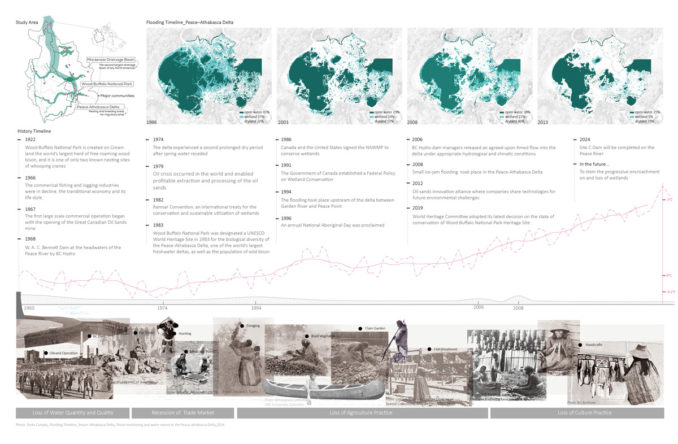
Project narrative
Peace Athabasca Delta, the largest freshwater deltas within the Wood Buffalo National Park as a UNESCO World Heritage site, is facing environmental deterioration. The water body is drying out while being contaminated by the hydro project and the oilsands industry from upstream, respectively. Combined with the rising temperatures, the vast expanse of waterways and wetlands where is the habitat for lures millions of birds, mammalian species has a precarious future loom, and indigenous people who inhabited the delta are no longer able to operate traditional food practice relied on the ecosystem.
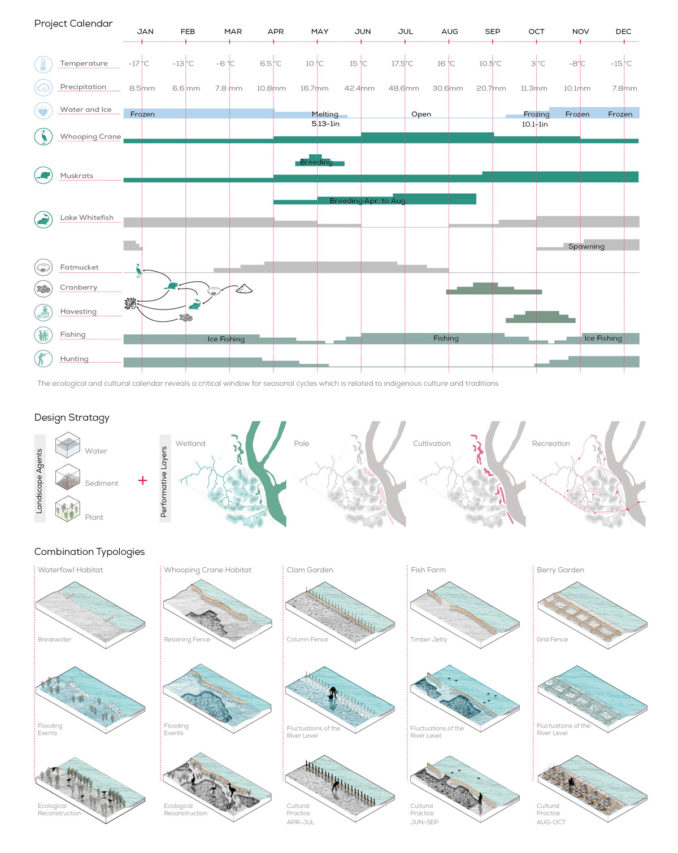
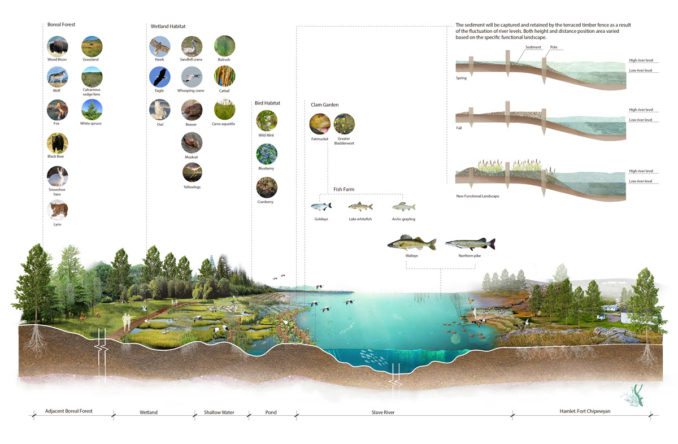
The proposal on the floodplain within Peace Athabasca Delta, next to the Slave River and Athabasca Lake, located adjacent to an indigenous hamlet named Fort Chip aims to generate the image of thriving wetland and socio-ecological practice by active intervening in the ecological and functional transformation. By taking advantage of sediment movement, flood hydrology, and precipitation, a time-based logic of landscape reclamation evokes full respect for water resources and food, which is deeply embedded in the culture of this land.
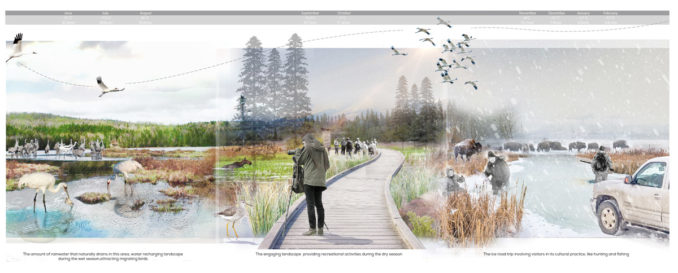
A revitalized environment that is visualizing landscape laid claim for water rights within the context, which seen as damaged. This functional landscape is composed of four systems engaged with three landscape agents, water, sediment, and plant:
1) wetland system: enables to regenerate riparian habitats, which host many plant and animal species vital to both whooping crane and indigenous community;
2) pole system: to accumulate a series of sediment actions by fluctuations of the river level and ice jam flooding events as well as poles’ height and distance are based on the different functional landscape;
3) cultivation system: the combination of food production and sedimentation to provide the opportunity for the indigenous express their culture, history, and traditions;
4) recreational system: a primary boardwalk path penetrates variety biomes and food production area to evoke the thoughts for relationships to the land, water, and each other.
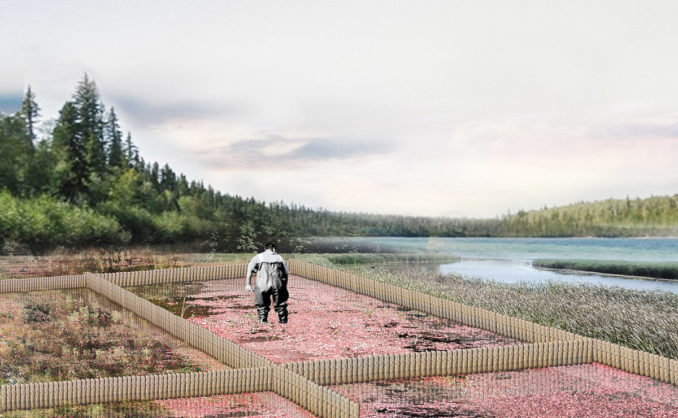
Water Is Life
Student Team | Huijing Chen, Wenting Yang – University of British Columbia

